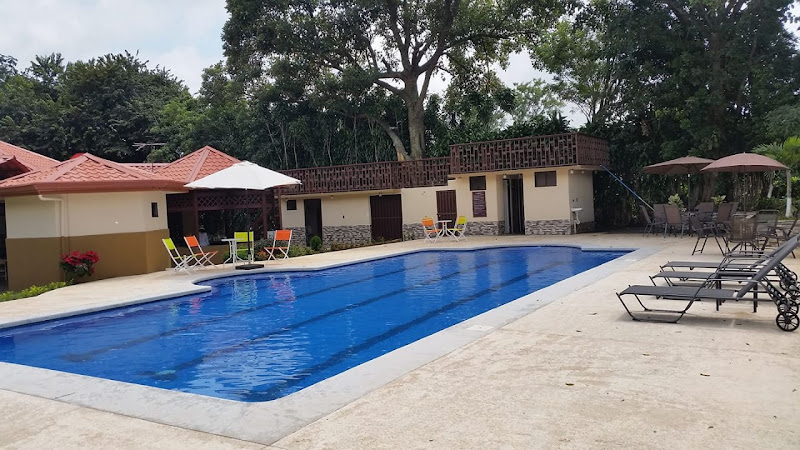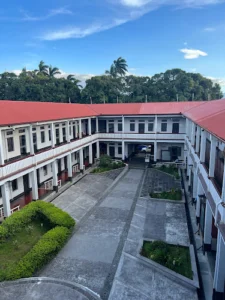
About Rancho Faparo
Description
Rancho Faparo is one of those places that sneaks up on you—in a good way. It’s a working cattle ranch situated in the heart of Alajuela Province, Costa Rica, and yeah, it feels like stepping into a slice of authentic rural life rather than some tourist trap. What I really appreciate is how grounded it is in tradition but still pretty accommodating for today’s traveler. The ranch is known for its open and wheelchair accessible entrances and parking, which is not something you see often in spots like this, making it a great option if you’re traveling with someone who needs extra access.
The vibe here is laid-back, honest, and genuinely friendly—thanks largely to the local folks who run the ranch and are surprisingly enthusiastic about showing visitors the ropes. It’s not all about pageantry or polished tours but real, hands-on experiences with cattle and ranch life. You can expect to see the day-to-day workings—cattle herding, livestock care, and traditional farming activities, all set against Costa Rica's lush green backdrop.
One thing that stood out to me—and this might sound a bit niche—is how the ranch manages to balance eco-conscious practices with everyday ranch operations. I noticed they’re quite careful about land use and preserving the natural surroundings, which is refreshing given how ranching can be rough on the environment elsewhere.
Now, this place doesn’t have the kind of fancy amenities you’d find at big resorts, but that’s kinda the point. You’re here for the ranch experience, the fresh air, and the genuine connection to Costa Rican countryside culture. Don’t come expecting Wi-Fi at every corner or a spa day anytime soon. Instead, expect big open skies, the occasional moo, and opportunities to slow down and soak in something real. Personally, I found it a nice contrast to the usual tourist hustle.
So if you’re curious about Costa Rica beyond its beaches and rainforests, Rancho Faparo offers a pretty unique peek into another side of the country. One that’s humble, hardworking, and somehow warm despite the dirt and sweat. It’s got its quirks and rough edges, sure, but that’s part of its charm—and why folks keep coming back.
Key Features
- Authentic working cattle ranch experience showcasing traditional livestock management
- Wheelchair accessible entrance and parking lot, making it inclusive for all visitors
- Hands-on activities that let you engage with ranch life, from cattle herding to farm chores
- Eco-conscious land use with careful preservation of surrounding flora and fauna
- Friendly, knowledgeable locals eager to share stories and traditions
- Ideal for travelers seeking an off-the-beaten-path rural adventure in Costa Rica
- Picturesque landscapes perfect for photography and nature spotting
- Nearby Alajuela town access for additional cultural and dining options
Best Time to Visit
If you want to make the most of your trip to Rancho Faparo, aim for the dry season, which runs roughly from December through April. The weather’s more predictable, trails are less muddy, and you can wander around without worrying too much about sudden downpours dumping on your day. I remember a visit once during the wet season—think slippery slopes, muddy boots, and a lot more mosquitoes. Not exactly ideal if you’re not used to jungle dampness!
Visiting between December and April also means longer daylight hours, making it easier to explore the ranch’s vast outdoor areas and catch those glowing sunsets over the hills. Plus, the dry season chances are higher that local festivities and cattle round-ups may be scheduled, adding a bit more excitement to your stay.
But hey, if you don’t mind a bit of rain and want to see the ranch during its lushest, greenest time, the rainy season from May to November can be magical too—just bring good rain gear and be ready for some mud wrestling with your boots.
How to Get There
Getting to Rancho Faparo is pretty straightforward but does require some planning, especially if you’re coming from outside Costa Rica. The closest international airport is Juan Santamaría International Airport, located near Alajuela city. From there, the ranch is accessible by car within about an hour’s drive, though the exact timing depends on traffic and your route.
If you’re renting a car (which I totally recommend), the drive is a pleasant introduction to Costa Rican countryside roads—expect a charming mix of paved highways and some bumpy back roads leading right up to the ranch gates. Renting a 4x4 is a good call if you want to be prepared for occasional potholes or uneven terrain, plus it gives you the freedom to roam the wider Alajuela area.
Public transportation options exist but they can be a bit tricky and time-consuming. Buses from Alajuela city might get you close, but you’ll likely need to arrange a taxi or ride-share for the final stretch. Honestly, if you’re on a tight schedule, a rental car or private transfer makes life way easier.
For those feeling adventurous, cycling is also an option—just be ready for some hills and tropical heat! And hey, if you’re arriving with a lot of gear or just looking for stress-free travel, consider booking a shuttle service from the airport or your hotel. It’s a splurge, but sometimes worth it to start your vacation on a high note.
Tips for Visiting
Alright, if you’re headed to Rancho Faparo, here are some tidbits I wish I knew before I went—it’ll save you a lot of head-scratching and cranky moments.
- Dress for dirt and sun: The ranch life isn’t glamorous—think sturdy boots, long pants, and hats. The sun in Costa Rica can blister you pretty fast, so bring sunscreen and sunglasses, no matter the season.
- Bug spray is your best friend: Mosquitoes and hanging flies love ranches just as much as the cattle do. Don’t forget a good insect repellent, especially if you’re visiting in the rainy season.
- Plan for limited connectivity: Wi-Fi can be spotty out here, and cell signal isn’t always reliable. Use it as an opportunity to unplug and enjoy the slower pace.
- Bring some cash: The ranch operates mostly on a cash basis for activities and souvenirs. ATMs are not exactly around the corner, so stock up beforehand.
- Be ready to get involved: This isn’t a sit-back-and-watch kind of place. Ranch owners are super enthusiastic about guest participation, whether that’s feeding animals or helping with simple chores—give it a shot, it’s oddly satisfying.
- Learn some Spanish phrases: While many people understand basic English, knowing a few local phrases will make interactions smoother and show respect for the culture.
- Respect the animals and environment: You’re a guest on the ranch’s turf, so be mindful of animal boundaries and do your best to leave no trace of your visit.
- Combine your visit with Alajuela exploration: There’s more to the area than just the ranch. Take a day to explore local markets, try Costa Rican coffee, or check out nearby volcanic parks for a well-rounded trip.
Visiting Rancho Faparo feels like stepping into a storybook where you get to write your own little chapter about life on a Costa Rican ranch. It’s real, a bit raw sometimes, yet so rewarding if you’re open to the experience. So pack your sense of adventure (and maybe a little patience), and get ready for a visit that’s anything but ordinary.


